По французски приятного аппетита: Как во франции желают приятного аппетита?
ПРИЯТНОГО АППЕТИТИТА! : fontyler — LiveJournal
ПРИЯТНОГО АППЕТИТИТА! : fontyler — LiveJournal ?- Еда
- Cancel
приятного аппетита — bon appétit [bɒn apəˈtiː]
Да, у англичан, которых всегда просмеивали за их «плохую» кухню (ну, на вкус — на цвет товарищей нет) нет и собственного пожелания приятного апетита! И как только живут, бедные. Но ведь и не пожелать приятного аппетита бывает просто невозможно — даже у англичан такая потребность нет-нет, и возникнет. Как же быть? На помощь приходит французский язык. С самими французами англичане вечно были в ссоре, где ни встретятся, ну обниматься, ну целоваться .

Но в таком случае и произносить приходится по-французски, куда же деться. А посему говорить следует [bɒn apəˈtiː] — без финального [t] — заметили в транскрипции, да?
Для верности послушаем, как это делают профессионалы. Давайте повторим вместе с диктором: [bɒn apəˈtiː], причём [bɒn] погнусавее, сильвупле.
Но! Это, конечно же, английский вариант английского языка (да, есть такой и ещё держится… местами). Однако главным из всех вариантов английского языка для нас является? Правильно, товарищи: всепроникающий и всёподавляющий американский вариант. И вы что, думаете, янки станут заморачиваться с подражанием каким-то там французам? Ещё чего. Поэтому, балякая на американском варианте, спокойно произносим и звук [t], завершающий bon appetit, и на гнусавость в [bɒn] не налегаем — обойдутся.
Tags: АНГЛИЙСКИЙ ЯЗЫК, ЕДА!ДаДа!, ИДИОМАТИКА, РЕЧЕВОЙ ЭТИКЕТ, РЕЧЕВЫЕ ФОРМУЛЫ
Subscribe
РЕЧЕВОЙ ЭТИКЕТ В ДЕЙСТВИИ
“I’m sorry, I didn’t mean to interrupt. Should I come back?” “No, Lex, it’s fine. What do you need? Uh… -…
Hi! — Hey! (- ЗДОРОВО! – ПРИВЕТ!)
— Hi. — Hey. I’m Steve Dodds, one of your brother’s advisors. His top advisor, actually. — Wow. It’s great to meet you. — Nice to,…
СЛУШАЕМ И СЛЫШИМ (Выпуск 06)
Самые распространённые фразы, например, высказывания речевого этикета, нередко произносятся так, что иностранцу их трудно разобрать, особенно если…
НЕ ДЕБАТЫ, А СУМБУР
Ни Дональд Трамп, ни Джо Байден манерами не блещут. Они постоянно перебивали друг друга, в первую очередь, конечно, Трамп Байдена. Трамп…
А ПРОСТИТ ЛИ ЕГО КОТ?
Come on ! Tell him you’re sorry for stepping on him at the top of the stairs.
 Ну скажи же ему: ты сожалеешь, что наступил на…
Ну скажи же ему: ты сожалеешь, что наступил на…РОССИЙСКИЕ СМИ ОШИБЛИСЬ
Фото отсюда Ну, по крайней мере, те которые я посмотрела. Но давайте разберёмся по порядку. Дональд Трамп, сразу же по прибытии в…
МАКРОН КОНСТАТИРОВАЛ СМЕРТЬ МОЗГА НАТО. ЭРДОГАН НЕ СОГЛАСЕН
— NATO is brain dead ! — Утверждает Макрон. — Сам ты brain dead , — вставляет шпильку Эрдоган. – То, что мы сейчас…
МОЛОТОК НЕ МОЛОТОЧЕК, ОТ КОЛЕНКИ НЕ ОТСКОЧИТ
“Nurse… see if you can find my little rubber hammer.” — Сестра… посмотрите, не найдёте ли мой резиновый…
WELL DONE – И ХОРОШО ПРОЖАРЕННЫЙ, И МОЛОДЕЦ!
Выражение well done существенно меняет свой смысл в зависимости от ситуации и контекста. Если вы заказываете well done стейк в ресторане,…
Photo
Hint http://pics.livejournal.com/igrick/pic/000r1edq
- 16 comments
РЕЧЕВОЙ ЭТИКЕТ В ДЕЙСТВИИ
“I’m sorry, I didn’t mean to interrupt.
 Should I come back?” “No, Lex, it’s fine. What do you need? Uh… -…
Should I come back?” “No, Lex, it’s fine. What do you need? Uh… -…Hi! — Hey! (- ЗДОРОВО! – ПРИВЕТ!)
— Hi. — Hey. I’m Steve Dodds, one of your brother’s advisors. His top advisor, actually. — Wow. It’s great to meet you. — Nice to,…
СЛУШАЕМ И СЛЫШИМ (Выпуск 06)
Самые распространённые фразы, например, высказывания речевого этикета, нередко произносятся так, что иностранцу их трудно разобрать, особенно если…
НЕ ДЕБАТЫ, А СУМБУР
Ни Дональд Трамп, ни Джо Байден манерами не блещут. Они постоянно перебивали друг друга, в первую очередь, конечно, Трамп Байдена. Трамп…
А ПРОСТИТ ЛИ ЕГО КОТ?
Come on ! Tell him you’re sorry for stepping on him at the top of the stairs. Ну скажи же ему: ты сожалеешь, что наступил на…
РОССИЙСКИЕ СМИ ОШИБЛИСЬ
Фото отсюда Ну, по крайней мере, те которые я посмотрела. Но давайте разберёмся по порядку.
 Дональд Трамп, сразу же по прибытии в…
Дональд Трамп, сразу же по прибытии в…МАКРОН КОНСТАТИРОВАЛ СМЕРТЬ МОЗГА НАТО. ЭРДОГАН НЕ СОГЛАСЕН
— NATO is brain dead ! — Утверждает Макрон. — Сам ты brain dead , — вставляет шпильку Эрдоган. – То, что мы сейчас…
МОЛОТОК НЕ МОЛОТОЧЕК, ОТ КОЛЕНКИ НЕ ОТСКОЧИТ
“Nurse… see if you can find my little rubber hammer.” — Сестра… посмотрите, не найдёте ли мой резиновый…
WELL DONE – И ХОРОШО ПРОЖАРЕННЫЙ, И МОЛОДЕЦ!
Выражение well done существенно меняет свой смысл в зависимости от ситуации и контекста. Если вы заказываете well done стейк в ресторане,…
Bon Appétit! // Priyatnovo Appetita! // Приятного аппетита!
Back to archive
seemingly strange dishes on display at canteens and cafes.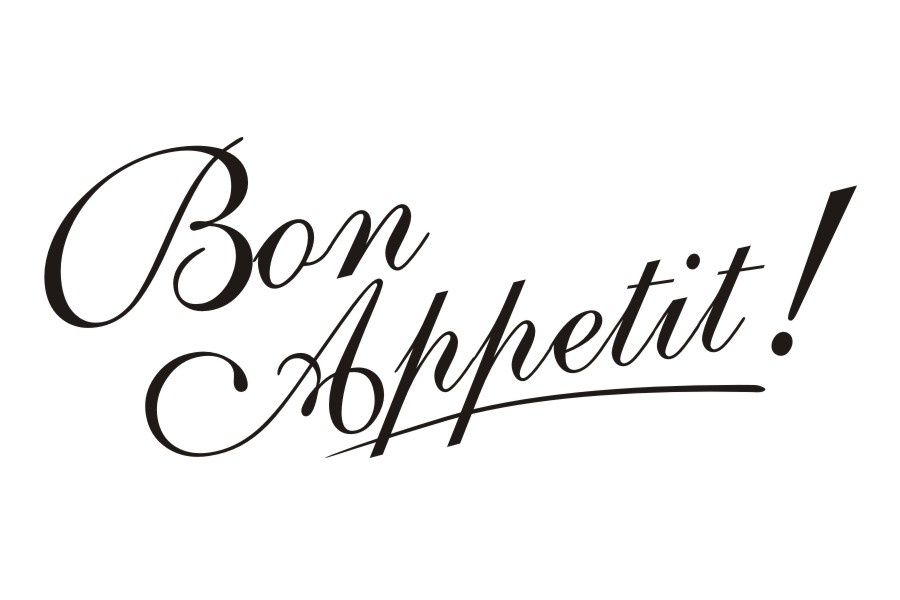 We hope that after reading this post these feelings of yours will disappear and you will be inspired to try some Russian delicacies!
We hope that after reading this post these feelings of yours will disappear and you will be inspired to try some Russian delicacies!
If it’s your first time in Russia, you might feel a bit overwhelmed by the seemingly strange dishes on display at canteens and cafes. We hope that after reading this post these feelings of yours will disappear and you will be inspired to try some Russian delicacies!
Here is our selection of classically Russian dishes. Can you think of any others?
Made of boiled potatoes, beets, and other vegetables such as carrots, peas, dill, salted cucumbers and pickles, vinegret is a relatively new dish to appear on Russian tables. The popular purple salad appeared around the start of the Soviet Union, when it was hard to find fresh vegetables – hence why the salad is, traditionally, made using canned vegetables (such as canned peas).
The name most probably derives from the French word vinaigrette, although the salad itself does not necessarily have to contain vinegar – it can be seasoned with sunflower oil or olive oil.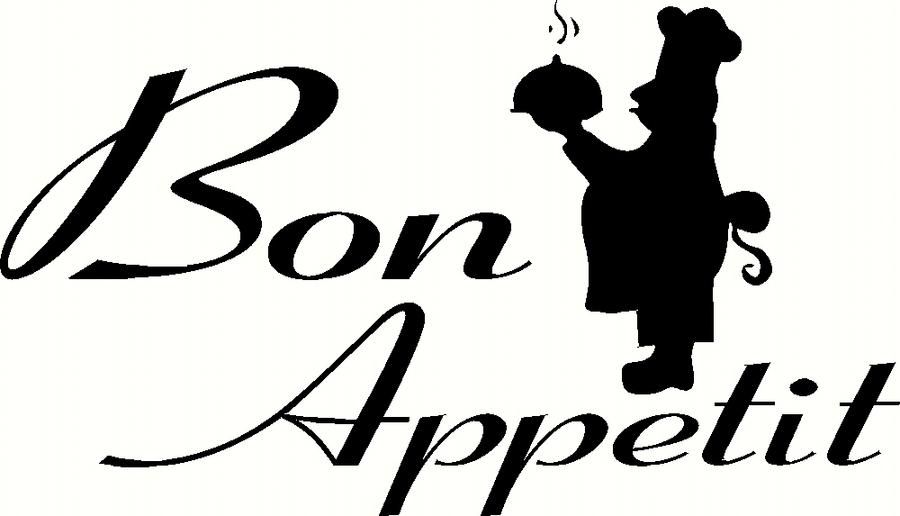
The dish can be eaten at any time of year, although it is a particular popular dish to be served at New Year.
Here is another popular beetroot dish. You might have heard of Borsch when your teacher taught you the letter Щ – the word borsch is often used for familiarising students with this tricky letter.
The name comes from Proto-Slavic *bŭrščǐ (meaning ‘hogweed’). Common hogweed (Heracleum sphondylium) was the soup’s principal ingredient before it was replaced with other vegetables, notably beetroot.
For a long time, the main ingredients of borsch were beetroots, cabbage, meat (beef or chicken), onions, carrots and herbs. It was only in the 19th century that potatoes and tomatoes began to appear in the soup. An important addition to borsch is smetana (sour cream) – make sure you try your borsch nice and hot and with a plentiful dollop of sour cream!
There is no single, established borsch recipe – every household makes their own variety. Our recommendation is to try to find a Russian who will make their own homemade borsch for you – this will also allow you to request a meatless variety, if you are vegetarian.
Our recommendation is to try to find a Russian who will make their own homemade borsch for you – this will also allow you to request a meatless variety, if you are vegetarian.
Blini are thin, flat pancakes prepared from batter and cooked on a hot frying pan – first on one side and then flipped to cook on the other side. Blini can be eaten with pretty much anything, but you’ll often find them with smoked salmon and sour cream, meat, mushrooms, potato, cottage cheese, caviar, jam, or condensed milk.
In pagan times blini were made for Maslenitsa, (literally translates from Russian as ‘Butter Week’ – because who wants a Pancake Day, when you can have a Pancake Week?!). Maslenitsa was – and still is – celebrated during the last week before Lent. Maslenitsa is a pagan festival that celebrates the imminent end of winter and the coming of spring. The blin itself, round and golden, symbolized the sun. It lasts for a week, during which people tend to eat nothing but pancakes.
The original version of the Olivier salad was invented in the 1860s by a cook of Belgian origin, Lucien Olivier, who worked in a famous restaurant in Moscow. Olivier’s salad quickly became immensely popular with his restaurant’s regulars, and became the restaurant’s signature dish.
The exact recipe — particularly that of the dressing — was top secret, but it is known that the salad contained grouse, veal tongue, caviar, lettuce, crayfish tails, capers, and smoked duck. The original Olivier dressing was a type of mayonnaise, made with French wine vinegar, mustard, and olive oil.
At the turn of the 20th century, one of Olivier’s sous-chefs, Ivan Ivanov, attempted to steal the recipe. When Olivier was out of the kitchen, Ivanov glanced at Olivier’s workbench and guessed the majority of the ingredients. He then left Olivier’s employ and went to work as a chef for the restaurant Moskva, where he began to serve a suspiciously similar salad under the name “capital salad”. However, many noted that the salad tasted different to the original – Ivanov had failed to guess all of the necessary ingredients. Later, Ivanov sold the recipe for the salad to various publishing houses, which further contributed to its popularization. Due to the closure of the Hermitage restaurant in 1905, and the Olivier family’s subsequent departure from Russia, the salad could now be referred to as “Olivier.”
However, many noted that the salad tasted different to the original – Ivanov had failed to guess all of the necessary ingredients. Later, Ivanov sold the recipe for the salad to various publishing houses, which further contributed to its popularization. Due to the closure of the Hermitage restaurant in 1905, and the Olivier family’s subsequent departure from Russia, the salad could now be referred to as “Olivier.”
Today’s version of Olivier salad — containing boiled potatoes, dill pickles, peas, eggs, carrots, and boiled beef/chicken, dressed with mayonnaise — is a version of Ivanov’s Stolichny salad, and only faintly resembles Olivier’s original creation.
This strangely-named salad is a New Year favourite. The name comes from the fact that the salad’s herring is laid under layers upon layers of heavy salad, representing its ‘furs’.
The salad consists of diced pickled herring covered with layers of grated boiled vegetables (potatoes, carrots, beet roots), chopped onions, and mayonnaise. Grated boiled beetroot covered with mayonnaise covers the top of the salad, which gives it a rich purple color. Dressed herring salad is often decorated with grated boiled eggs (whites, yolks, or both).
Grated boiled beetroot covered with mayonnaise covers the top of the salad, which gives it a rich purple color. Dressed herring salad is often decorated with grated boiled eggs (whites, yolks, or both).
Although it may seem strange that such a heavy dish can be called a salad, be sure to try this dish at least once – it’s a staple part of Russian cuisine!
Mors is a non-carbonated Russian fruit drink prepared from berries, mainly from lingonberry and cranberry (although there are other fruits that are also used). It’s made by boiling berries with sugar or just mixing pure juice with sweetened water.
The origins of mors are unknown. Some say that it first appeared in the 16th century, since it is mentioned in a book of Russian household rules (called ‘Domostroy’). But many say that it has probably been around for a lot longer.
A fizzy bread drink sometimes referred to as Russian cola, kvas literally means “leaven. ” Its origins go back 50 centuries, to the beginnings of beer production. Kvas was first mentioned in Old Russian Chronicles in the year 989.
” Its origins go back 50 centuries, to the beginnings of beer production. Kvas was first mentioned in Old Russian Chronicles in the year 989.
Some say the drink was invented by mistake. According to one legend, a bag of grain got wet and the grain started to grow. A farmer decided to save the product and make flour out of it. He couldn’t use it to make bread and instead, invented malt. He added some water, let the liquid ferment and created the first ever kvas.
After the collapse of the Soviet Union, Western soft drinks such as Coca-Cola and Pepsi decreased the demand for commercial kvas in Russia. But today the drink is back on the market and is on the rise once again. The Russian company Nikola (in Russian the name sounds like “not cola”) has promoted its brand of kvas with an advertising campaign emphasizing “anti cola-nisation”.
Also used as a word to familiarise students with the letter Щ, Schi is a popular Russian soup.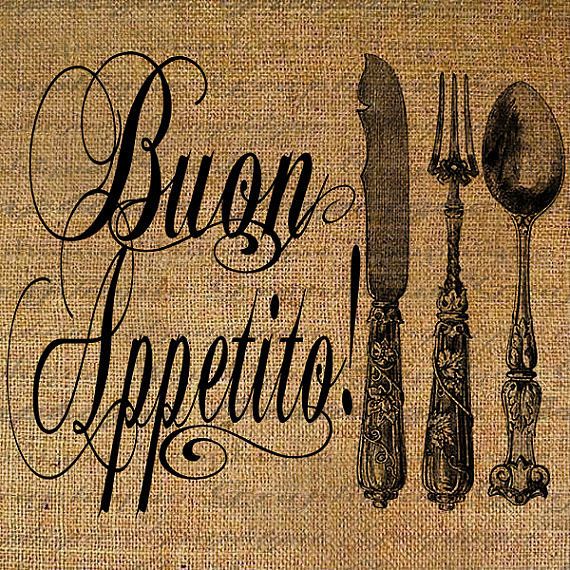 In fact, it can be considered one of the main dishes of Russian cuisine, considering the proverb: Schi and Kasha are our food (it sounds much better in the Russian: щи да каша — пища наша).
In fact, it can be considered one of the main dishes of Russian cuisine, considering the proverb: Schi and Kasha are our food (it sounds much better in the Russian: щи да каша — пища наша).
Going back as far as the 9th century, soon after cabbage was introduced from Byzantium, Schi has remained a popular choice for the table, with its simple – yet filling – ingredients. Its main ingredient is cabbage, but you can also find it with potato, meat (mainly pork), tomato, carrot and onion.
Pelmeni are a kind of dumpling, consisting of a particular filling that is wrapped in a thin dough. They are served hot, often with lashings of sour cream. The fillings are often either meat, fish, or mushroom, as well as plentiful seasoning.
The word itself comes from pel’nyan’ literally “ear bread” in the native Finno-Ugric Komi and Mansi languages. No one knows for sure when pelmeni first entered Russian cuisine but one theory suggests that stuffed boiled dumplings in general, originated in northwestern China. The general thought is that pelmeni were carried by the Mongols to Siberia and the Urals and then gradually spread as far as Eastern Europe. The dish was particularly favored by hunters, who were looking for light, easy-to-prepare, nourishing food to take with them on long trips in the winter.
The general thought is that pelmeni were carried by the Mongols to Siberia and the Urals and then gradually spread as far as Eastern Europe. The dish was particularly favored by hunters, who were looking for light, easy-to-prepare, nourishing food to take with them on long trips in the winter.
Pelmeni are very practical: you can prepare them in advance, freeze them, and then have them at the ready for when you’re cold and hungry and need something to fill you up!
Don’t confuse pelmeni with vareniki – vareniki are slightly bigger and often have sweet fillings; pelmeni never come with sweet fillings.
Although vareniki originate from Ukraine, many Russians enjoy eating this filling dish. The fillings of vareniki, unlike those of pelmeni, are not limited to meat, fish and mushrooms – you can find vareniki filled with almost anything! The most popular vareniki are those with potatoes, cabbage, beef, cherries or cottage cheese.
Did you know? Ukrainians have a somewhat obsession with vareniki and every year reports of yet another ‘world’s biggest varenik’ come from this country. The latest gigantic dumpling to compete for the world record was made in a village close to the capital Kiev. The huge varenik weighed almost one hundred kilograms!
Syrniki are fried pancakes made from soft cheese (творог) – and sometimes also raisins – and are often garnished with sour cream or jam. The name comes from the Russian word for cheese (сыр) which, although it now means hard yellow cheese, was previously used as the label for soft cheese.
We couldn’t possibly finish this article without mentioning kasha, arguably the most important dish in the Russian cuisine. Kasha – what many translate as ‘porridge’ (although it’s much more than just porridge) – can refer to many different types of grain, including buckwheat, rice, barley, wheat, millet, oat, and rye. It can be eaten at any time of day – from breakfast to dinner – and can be prepared with milk or water, and served with anything, from simple butter to thick sour cream!
It can be eaten at any time of day – from breakfast to dinner – and can be prepared with milk or water, and served with anything, from simple butter to thick sour cream!
So, there you have it – a collection of classically Russian dishes. Of course, we could name more (we failed to talk about caviar, for instance). Nevertheless, we hope that we managed to give you an adequate introduction into the world of Russian cuisine!
Bon Appétit определение и значение
- Top Definitions
- Викторина
- Подробнее о Bon Appetit
- Примеры
[Baw Na-Pey-Tee]
/ Bɔ Na Peɪˈti /
/ bɔ na peɪˈti /
/ bɔ na peɪˈti /
!
См. синонимы к слову приятного аппетита на Thesaurus.com
синонимы к слову приятного аппетита на Thesaurus.com
междометие Французский.
(Желаю) крепкого аппетита.
ВИКТОРИНА
ВЫ ПРОЙДЕТЕ ЭТИ ГРАММАТИЧЕСКИЕ ВОПРОСЫ ИЛИ НАТЯНУТСЯ?
Плавно переходите к этим распространенным грамматическим ошибкам, которые ставят многих людей в тупик. Удачи!
Вопрос 1 из 7
Заполните пропуск: Я не могу понять, что _____ подарил мне этот подарок.
Слова рядом bon appétit
bonanza, Bonanza Creek, Bonaparte, Bonapartism, Bonapartist, bon appétit, Bonar Law, bona vacantia, Bonaventura, bonaventure, bonavist
Dictionary.com Unabridged Основано на словаре Random House Unabridged Dictionary, © Random House, Inc., 2022
ПОДРОБНЕЕ О ПРИЯТНОГО АППЕТИТА
Что означает
приятного аппетита ?Приятного аппетита — это способ сказать кому-то, что ему нравится то, что он собирается съесть.
Bon appétit происходит от французского и буквально означает «хорошего аппетита». Это одна из самых распространенных вещей, которые говорят людям перед едой. Как и другие французские термины, заимствованные английским языком, он часто используется для причудливого звучания (по крайней мере, это лучше, чем выражение 9).0049 перекусить или копать в ).
Это одна из самых распространенных вещей, которые говорят людям перед едой. Как и другие французские термины, заимствованные английским языком, он часто используется для причудливого звучания (по крайней мере, это лучше, чем выражение 9).0049 перекусить или копать в ).
Приятного аппетита произносится правильно без финала t : baw nah-pey-TEE.
Пример: Перед вами террин из копченой цветной капусты с трюфельным соусом и микрозеленью — приятного аппетита!
Откуда
приятного аппетита ?Первые записи об использовании bon appétit на английском языке относятся к 1860-м годам. Оно заимствовано непосредственно из французского языка, в котором bon означает «хорошо», а appétit означает «аппетит». Слово bon появляется в других общеупотребительных английских терминах, заимствованных из французского, например, bon voyage .
Известная кулинарная личность Джулия Чайлд помогла популяризировать французскую кулинарию и кухню в США через свое телешоу «Французский шеф-повар», которое она всегда заканчивала словами « Приятного аппетита !» Использование ею этой фразы отражало ее связь с французской культурой питания и изысканными блюдами в целом. Сегодня использование этой фразы распространилось по всему миру.
Сегодня использование этой фразы распространилось по всему миру.
Может показаться странным желать кому-то хорошего аппетита, когда он и так явно готов поесть, но на самом деле вы говорите, что надеетесь, что он получит максимальное удовольствие (еда вкуснее, когда вы действительно голодны). , правильно?). Наслаждайтесь! — еще один очень распространенный, но более случайный способ сказать то же самое.
Приятного аппетита по-прежнему чаще всего употребляется традиционным способом: перед едой, особенно изысканной. Но это также часто используется с юмором в ситуациях, которые не являются обедом из пяти блюд. Например, если кто-то увидит, как вы покупаете шоколадный батончик в торговом автомате, чтобы быстро перекусить, он может сказать 9.0049 приятного аппетита повеселиться.
Знаете ли вы…?
Как
приятного аппетита используется в реальной жизни? Приятного аппетита — очень распространенный способ пожелать людям хорошей еды.
Если вы потратите время на то, чтобы подать еду на тарелку, даже если это дешевое и простое блюдо, вы превратите его из хорошего в великолепное и получите возможность попрактиковаться в своих навыках презентации. Приятного аппетита! pic.twitter.com/uvC0sspleg
— Стейкхаус Люсии (@LuciaSteakhouse) 13 мая 2020 г.
Я только что принял важное решение…. ночь хлопьев в нашем доме. Приятного аппетита!
— Дженни Швайгерт 🇺🇲 (@JenSchweigert) 16 декабря 2018 г.
Полезный, простой и вкусный рецепт холодной пасты (№174) с помидорами пачино, сельдереем, луком, оливковым маслом холодного отжима, солью. Приятного аппетита 🍷 pic.twitter.com/7h0aWUFYZi
— Pasta recipes it (@pastarecipes_it) 8 декабря 2018 г.
Попробуйте использовать0049 приятного аппетита
!Правда или ложь?
Приятного аппетита буквально переводится как «хорошая еда».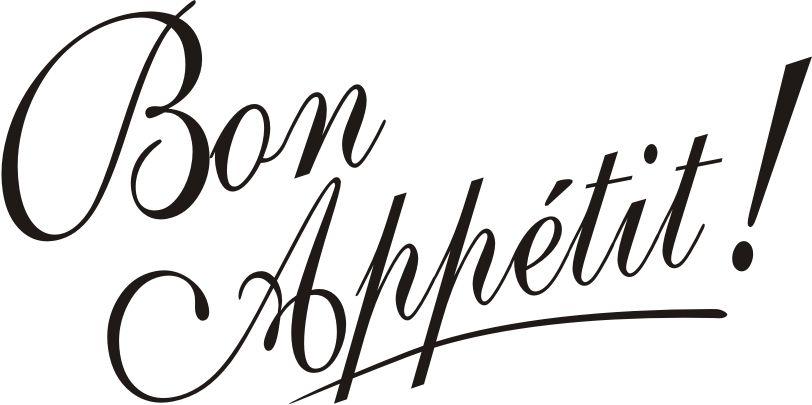
Как использовать bon appétit в предложении
И вся компания Bon Temps собралась на праздничный обед в честь Дня Благодарения.
«Настоящая кровь» заканчивается всхлипом: сериал HBO о сексуальных вампирах (наконец-то) закончен|Марлоу Стерн|25 августа 2014|DAILY BEAST
Что есть у Сета Рогена, Тейлор Свифт и Джона Бон Джови общего?
13 знаменитостей, которые ненавидели Джастина Бибера|Кевин Фэллон|7 августа 2014 г.|DAILY BEAST
Том Круз и Джон Бон Джови постоянно навещали ее, когда она была маленькой девочкой.
Юные мусульманские комиксы о фундаменталистах|Моральное мужество|19 мая 2014 г.|DAILY BEAST
Это третья новая коллекция для Pallas, и она продается в Bon Marche.
Последний «настоящий» Дом высокой моды|Лиза Форман|5 марта 2014 г.|DAILY BEAST
Смотрите остальные подборки лучших ресторанов Америки от Bon Appetit исключительно на BonAppetit.
 com.
com.Лучший новый ресторан Америки|Приятного аппетита|30 августа 2013|DAILY BEAST
— Увы, mon bon Monsieur, дела идут все хуже и хуже, — вздохнул старик.
Веселые приключения Аристида Пужоля|Уильяма Дж. Локка
Mais on peut bien appeller vn voyage heureux, quand en fin по прибытии в добрый порт.
Отношения иезуитов и союзнические документы, Vol. II: Акадия, 1612-1614|Разное
Ledit Patriarche y alla, & avec vn truchement fit envers lui ce qui estoit de l’office d’un Pasteur.
Отношения иезуитов и союзнические документы, Vol. II: Acadia, 1612-1614|Разное
Если bon Dieu не посылает вам этих вибрирующих вдохновений, то это потому, что вы сами их уже придумали!
Веселые приключения Аристида Пухоля|Уильям Дж. Локк
Que si la Royne vouloit qu’ils y allassent, on leur rendist leur argent, & qu’ils fissent ce que bon leur sembleroit.
Отношения иезуитов и союзнические документы, Vol.
 II: Acadia, 1612-1614|Разное
II: Acadia, 1612-1614|Разное
Приятного аппетита — значение, произношение и многое другое!
Когда вы посещаете Францию, вы хотите чувствовать себя и говорить как местный житель или, по крайней мере, более «местный», чем средний турист, поэтому вы пытаетесь выучить некоторые распространенные французские фразы, выражения и приветствия.
Вы слышали французское приветствие Приятного аппетита , но, возможно, вы не на 100% уверены, что оно означает.
Как вы произносите это правильно?
Это вежливо так говорить или на самом деле неуважительно?
Как вы можете реагировать, когда кто-то говорит вам это?
Начинаем!
Цели обучения: Это то, что вы сможете сделать после просмотра этого урока
- Начальный уровень: Изучить некоторые обычаи французской кухни Освойте примеры и полезные советы
Bonjour c’est Géraldine.
Bienvenue sur Comme une Française. C’est party!
1.
 «Приятного аппетита» значение и произношение
«Приятного аппетита» значение и произношение Приятного аппетита! означает «Приятного аппетита» / «Наслаждайтесь едой».
Произносится как [ Bohn app aytee ]. (Конечная буква «т» не произносится.)
Происходит от существительного мужского рода « l’appétit » (= «аппетит, здоровое желание есть»).
Вот почему мы пишем « Bon » (= мужской род означает «хороший») и НЕ « Bonne » (= женский род означает «хороший») appétit вместо «хороший аппетит».
Однако Bon оканчивается на согласную букву, а за ней следует гласная (a), поэтому мы делаем la liaison – «n» больше не молчит, а Bon вместо этого звучит как Bonne.
Приятного аппетита!
2. Это действительно вежливо?
Тут и там можно встретить противоречащие друг другу городские легенды о том, что « Bon appétit » на самом деле невежливо — что это намекает на телесные функции, которые приходят во время еды, и будет считаться грубым или дурным тоном…
Ну, это ложь! Пожалуйста, продолжайте повторять Приятного аппетита! в начале трапезы — это сигнал, что трапеза может начинаться, что вы все готовы к употреблению.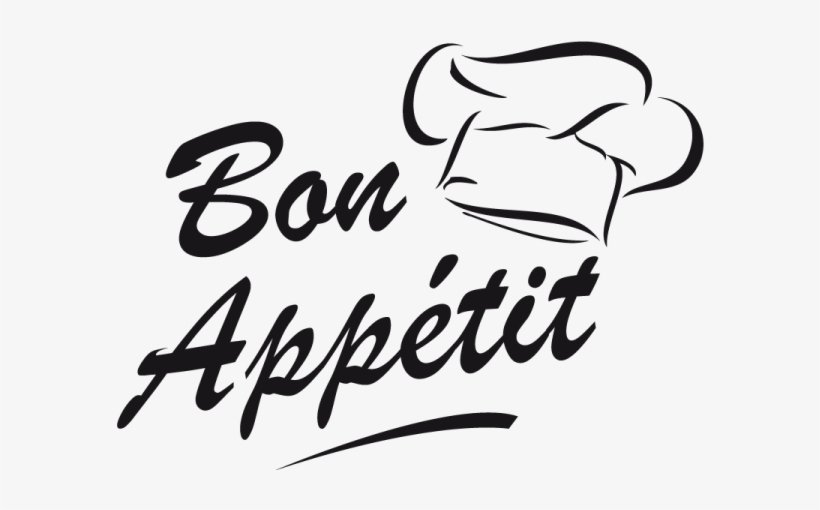
Вы также можете сказать это людям, которые уже едят.
Например, если вы путешествуете по французским горам и встречаете пару других туристов, садящихся на пикник, вы можете сказать им Приятного аппетита! в качестве приветствия, пока вы проходите мимо.
Если кто-то скажет вам Приятного аппетита! вы можете ответить Merci (= спасибо) , если они тоже не едят (например, если они официанты). Если они едят одновременно, вам нужно только пожелать им того же:
3. Столовые обычаи сильны
Столовые обычаи во Франции важны. Есть много распространенных ошибок, которые совершают иностранцы, когда речь заходит о французской еде, в том числе ошибки с хлебом!
Французские обычаи за столом — это скорее набор привычек, чем письменный свод правил. Но это связано с тем, что еда во Франции означает не только наслаждение хорошими местными продуктами, но и общение с людьми, с которыми вы делитесь едой!
Это было особо отмечено, когда ЮНЕСКО включила французские гастрономические блюда в список нематериального культурного наследия.

 Ну скажи же ему: ты сожалеешь, что наступил на…
Ну скажи же ему: ты сожалеешь, что наступил на… Should I come back?” “No, Lex, it’s fine. What do you need? Uh… -…
Should I come back?” “No, Lex, it’s fine. What do you need? Uh… -… Дональд Трамп, сразу же по прибытии в…
Дональд Трамп, сразу же по прибытии в… com.
com. II: Acadia, 1612-1614|Разное
II: Acadia, 1612-1614|Разное